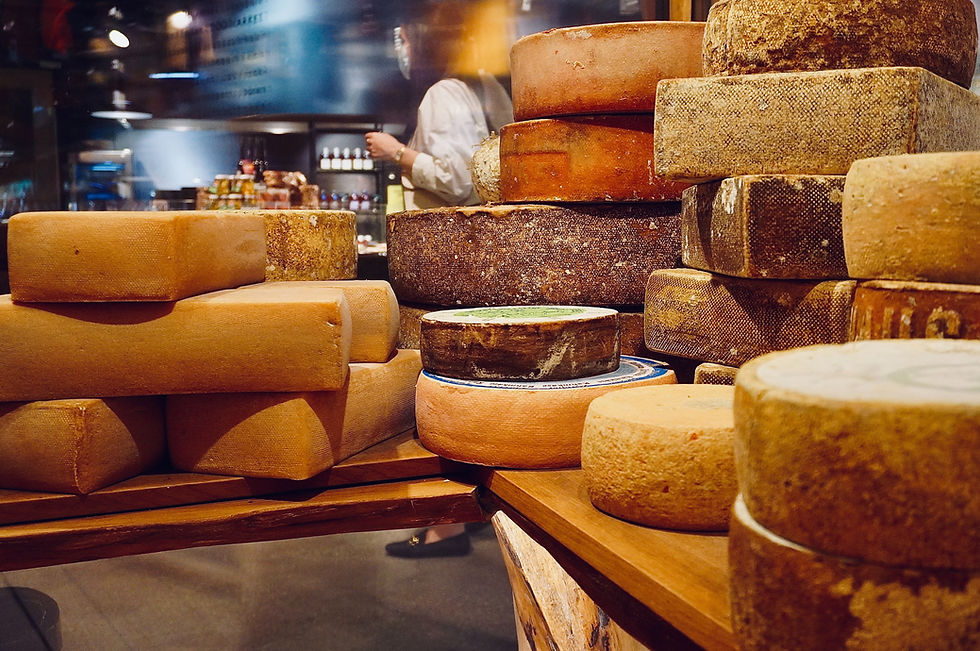Oldest Cattle Cult 6000 BCE - Arabia
- Sylvia Rose

- Mar 6, 2024
- 5 min read
The oldest cattle cult appears in Arabia c. 6000 BCE. Described by the research team as the “first large-scale, monumental ritual landscape anywhere in the world … [it is] the earliest evidence for a cattle cult in the Arabian Peninsula.”
READ: Cult of the Fire God - Bronze Age Quest Adventure
See also:
The site is enormous, consisting of groups of 2 - 19 mustatil. The mustatil are prehistoric monuments built of sandstone walls. Mustatil is the Arabic term for rectangle, the shape of the enclosures. About 1000 mustatils have been found in NW Arabia since 2021 CE.
READ: Cult of the Fire God - Bronze Age Quest Adventure
Some of the sandstone blocks used in the constructions weigh more than 500 kg, or just over half a ton. The area of building covers a massive area of 200,000 sq km (77,220 sq mi). Construction of mustatil is later than than of kites.
See also:
Above: examples of mustatil in northwest Arabia. The sites are deliberately laid out. Those like C are built on sides of volcanoes, attesting to their use as ritual monuments and not regular cattle pens or enclosures for killing such as kite constructions.
At first mustatil are assumed to be kites, Neolithic herding or killing pits. Kites and mustatil are both prehistoric enclosures surrounded by crude, low stone walls. The distinction between mustatil and kites is apparent both in shape and size.
See also:
Mustatil are generally smaller. The longest kite is 6 k (3.7 ft) long, with the longest mustatil measuring 600 m (1970 ft). Kites go back to about 8000 BCE and have persisted for millennia. Mustatil are confined in time to 6-5000 BCE or the Late Neolithic.
Kite construction starts in the early Neolithic and prevails for thousands of years. They're built in a range of shapes, and feature "killing pits." where animals are driven to be killed with clubs, spears, stones or other weapons.
See also:
In this way they have similar use to the mass kill sites of the American aboriginal people, who at one time drive buffalo over cliffs. One of these regions, the largest of the ancient buffalo cults, is preserved in First Peoples Buffalo Jump State Park in Missouri, USA.
Also similar are Neolithic northern European 'trapping pits'. A trapping pit is a hole dug and hidden. An animal falls into the pit and is killed with rocks, clubs, spears and other weapons.
See also:
European rock art and cave paintings reveal red deer (Cervus elaphus) and elk or moose (Alces alces) are hunted in the Stone Age using trapping pits. Remains of trapping pits for elk, reindeer, wolves and bears are still found in Northern Scandinavia.
READ: Cult of the Fire God - Bronze Age Quest Adventure
In Hinduism the Brahmic texts state the five creatures suitable for sacrifice in Vedic India, in descending order of importance, are man, horse, cattle, sheep and goat. The text of the Rigveda and other Vedas provide detailed description of sacrifices including cattle sacrifice.
See also:
The complex Arabian structures are defined as ritual or sacrificial sites in 2021. The layout of chambers suggests a type of single-file procession to an inner location. There, primarily cattle bones are piled beside an upright mastaba stone or type of bench.
According to the research team, it's a "ritual deposition of animal horns and cranial elements, particularly of cattle.” The authors state this fits with “the rock art of the region, with scenes of both cattle herding and hunting frequently appearing.”
See also:
Radiocarbon dating of the cattle skulls show them to be from c. 5300 - 5000 BCE. At this time the Holocene Humid Phase affects climate. Now a desert, the area during the Holocene is a grassland with frequent droughts.
The dates of cattle domestication to cult-like ritual animals coincides with the formation of the lactose tolerant gene in humans. Early humans are the same as most other mammals. After infancy they develop intolerance to lactose, a sugar found in dairy products.
See also:
However, humans ingest dairy regardless. Making cheese, butter and yogurt from the milk destroys some indigestible compounds and these foods are easier on the system. Over 2000 to 20,000 years, many groups of humans establish an adult tolerance for lactose.
Cattle cults of later history include the bull Apis of Egypt and the reverence of Mithras in ancient Rome. The worship of Ninsun, wise cow goddess and mother of Gilgamesh, is attested in Babylonia.

Ninsun (Ninsumun) translates in Sumerian as Nin-sumun(ak) or Lady of the Wild Cows. A Mesopotamian goddess at Uruk, Ninsun is the mother of Gilgamesh. She's considered a lamma or protector goddess, and her symbol is the wild cow.
Some cattle cults move into mass sacrifice and bloodletting especially of bulls and oxen. This is the case at the Temple at Uppsala in 10th century Sweden. In some cultures animal sacrifice is still practiced today, as Tamil Nadu in South India.
See also:
Cattle are killed as part of funerary rituals at royal graves in Ur (2900-2350 BCE). The sites contain whole skeletons of cattle killed in their prime, an extravagant show of wealth. After the sacrifice people usually feast on the meat.
Cows are precious as a single cow can feed a family with milk, butter, cheese and other products with nutritious health benefits. In a lack of oxen she'll even pull a plow.
See also:
She can also make more bulls for the sacrificial altar. Offerings of butter and cheese are left at temples of cow goddesses in Egypt. In ancient Greece, preferred animal sacrifice in order of importance are bull or ox, cow, sheep, goat, pig, piglet and poultry.
See also:












